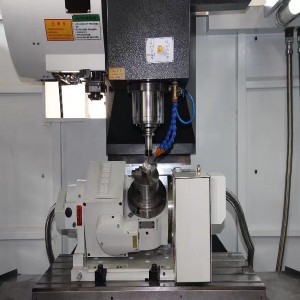CNC (computer numerical control) machining is a process in manufacturing where programmed computer software directs the motions of plant machinery and tools. The application can be used to automate a range of manufacturing techniques such as milling, water jet cutting, and laser cutting materials. Instructions are fed into the CNC machine through a CAD file and transposed into a precise set of sequential instructions. The CNC machine uses these programmed commands to operate automatically without a physical operator.
The reference to axes is used to describe CNC machines which operate along multiple axis points. CNC machining is the process of removing material from a workpiece until the desired shape is configured. These machines have at least a 3 axes and operate along an XYZ plane: X axis (vertical), Y axis (horizontal), and a Z axis (depth). The 4th axis denotes the inclusion of an A axis (rotation around the X axis), and the 5th axis denotes the B axis (rotation around the Y axis).
The number of axes on a CNC machine determines the type of work it can do, the level of detail it can cut, and the workpiece locations it can manipulate. So what does this all mean?
3 Axis
3 axis machining implies that the workpiece remains in the same position while the cutting tool operates along the XYZ plane to trim away material. This is suitable for parts that don’t require a lot of depth and detailing. 3 axis machining is most commonly used to produce mechanical components and is best suited for:
- Automatic/interactive operation
- Milling slots
- Drilling holes
- Cutting sharp edges
4 Axis
4 axis machining implies that a workpiece is processed in the same way it would be with a 3 axis machine, but has an additional rotary movement around the X axis, which is named the A axis. This rotation allows the workpiece to be cut around the B axis. This method is beneficial when holes or cuts need to be made on the sides of a workpiece. The addition of a fourth axis (A axis) allows a workpiece to be automatically flipped over, so the machine can remove material from both sides. 4 axis machining is multifunctional and can be used for:
- Intermittent cutting
- Continuous cutting
- Engraving curved surfaces
5 Axis
5 Axis machining implies that a workpiece can be automatically manipulated from five sides at one time. In addition to automatic movements along the X, Y, and Z axes, 5 axis CNC machines can select two of the three rotational axes (A,B,C) to use. The A, B, and C axes perform a 180° rotation around the X, Y, and Z axes, correspondingly. This type of machining is used in the industries. Application is commonly favored for extreme automobile, aerospace, and boating complex components that are solid and would otherwise have to be cast. 5 axis machining requires greater CNC programming preparation time to accommodate complex rotatory movement, but allows one workpiece to be worked on all five sides during one operation. 5 axis machining is beneficial when components require a great deal of intricacy and quick precision. This includes:
- Feature accuracy
- Increased productivity
- Higher quality finishes
- Cutting intricate details
- Machining complex shapes
AXES MOVEMENTS
- X axis – left to right
- Y axis – front to back
- Z axis – up and down
- A axis – 180° rotation around the X axis
- B axis – 180° rotation around the Y axis
- C axis – 180° rotation around the Z axis
TYPES OF CNC MACHINES
- 3 Axis – X, Y, and Z axes
- 4 Axis – X, Y, Z, and A axes
- 5 Axis – X, Y, and Z axes and two out A, B, and C axes
About Us
Shenzhen Xinsheng Precision Hardware Machinery Co., Ltd, we have a strong team.
With our strong technical staff and advanced machines, we work with our global customers to provide CNC machining services according to their business requirements.
Learn more about our CNC machining services.
Post time: Apr-01-2023







